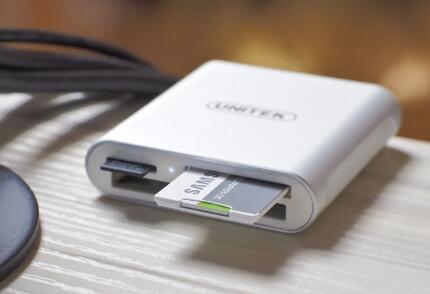SD (Secure Digital) card readers with USB ports are essential tools for transferring data between SD cards and computers or other devices. They offer convenience and versatility, making them popular among photographers, videographers, and tech enthusiasts.
Types of SD Card Readers
Basic SD Card Readers
Single Slot Readers: These readers typically support one SD card at a time. They are often compact and portable, ideal for users who need to transfer data from a single card quickly.
Multi-Slot Readers: These devices can accommodate various types of memory cards, including SD, microSD, CF, and others. They offer versatility for users with multiple types of memory cards.
High-Speed Card Readers
USB 3.0/3.1/3.2 Readers: These readers provide faster data transfer rates compared to USB 2.0 readers. They are suitable for high-resolution photos and high-definition videos.
UHS-II Card Readers: Designed to handle Ultra High Speed (UHS) SD cards, these readers offer even faster speeds for professional photographers and videographers.
Wireless SD Card Readers
Wi-Fi Enabled Readers: These readers connect to devices wirelessly, eliminating the need for physical connections. They are useful for transferring data to mobile devices or tablets.
Built-in Card Readers
Laptop and Desktop Integrations: Some computers come with built-in SD card readers, which can be convenient but might lack the versatility and speed of external readers.

Key Features to Consider
Compatibility
Ensure the reader supports the type of SD card you use, including SD, SDHC, SDXC, and microSD formats.
Speed
Look for readers that support high-speed data transfer protocols such as USB 3.0 or UHS-II to handle large files efficiently.
Build Quality
A well-constructed card reader should be durable and reliable, with a sturdy connection that minimizes the risk of data corruption.
Portability
Consider the size and weight of the reader, especially if you need to carry it frequently. Compact and lightweight designs are ideal for travel.
Ease of Use
User-friendly design features, such as plug-and-play functionality, make the reader easy to use without needing additional drivers or software.
How SD Card Readers Work
Connection
SD card readers typically connect to a computer or device via a USB port. The USB connection facilitates data transfer between the SD card and the computer.
Data Transfer
Once connected, the computer recognizes the SD card as an external storage device. Users can then access, copy, and manage files using standard file management software.
Power Supply
Most SD card readers draw power directly from the USB port, eliminating the need for an external power source.
Applications of SD Card Readers
Photography and Videography
Photographers and videographers use SD card readers to quickly transfer large files from memory cards to their computers for editing and storage.
Data Backup
SD card readers are useful for creating backups of important data stored on SD cards, ensuring data security and redundancy.
File Management
Users can organize and manage files on their SD cards more efficiently using a card reader, allowing for easier access and manipulation.
Device Compatibility
SD card readers bridge the gap between various devices, such as cameras, smartphones, and computers, making it easier to access and transfer data across different platforms.
Choosing the Right SD Card Reader
Assess Your Needs
Determine the types of SD cards you use and the required data transfer speed. Choose a reader that matches your specific needs for compatibility and performance.
Read Reviews
Research customer reviews and expert opinions to find reliable and high-quality SD card readers. Look for feedback on speed, durability, and ease of use.
Consider Additional Features
Some readers offer additional features such as built-in storage or the ability to connect multiple devices. Evaluate these features based on your requirements.
Troubleshooting Common Issues
Card Not Recognized
Ensure the card is properly inserted and formatted. Check for driver updates and try connecting the reader to a different USB port or computer.
Slow Transfer Speeds
Verify that the reader and SD card support high-speed data transfer protocols. Use a USB 3.0 or higher port for faster speeds.
Data Corruption
Avoid removing the card during data transfer and use reliable software to manage file transfers to prevent data corruption.
About us and this blog
Panda Assistant is built on the latest data recovery algorithms, ensuring that no file is too damaged, too lost, or too corrupted to be recovered.
Request a free quote
We believe that data recovery shouldn’t be a daunting task. That’s why we’ve designed Panda Assistant to be as easy to use as it is powerful. With a few clicks, you can initiate a scan, preview recoverable files, and restore your data all within a matter of minutes.










